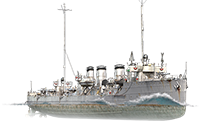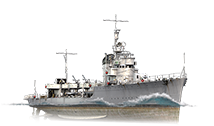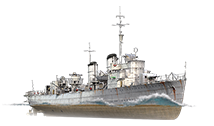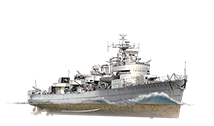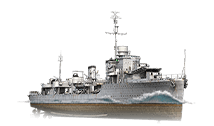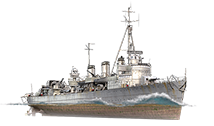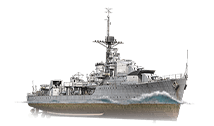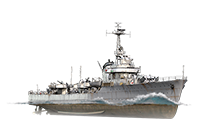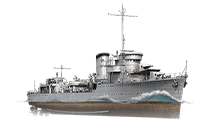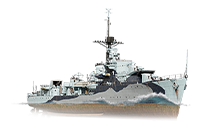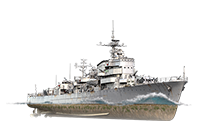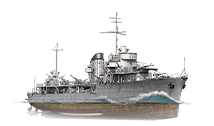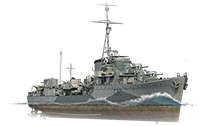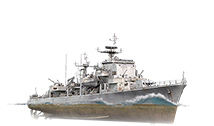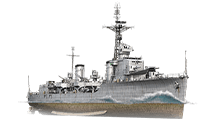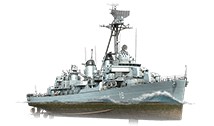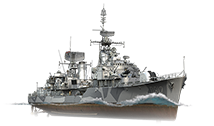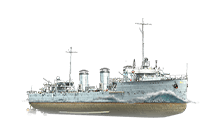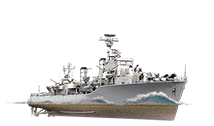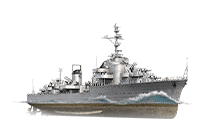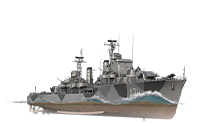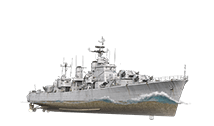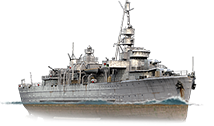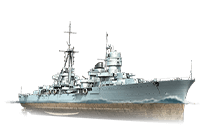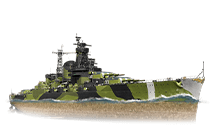Ships of Europe
(link)
European Destroyers. How to?

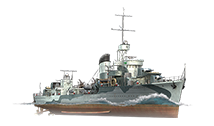
Initially deciding on a strategy of harassment and indirect engagement, Polish naval command realized that the small, mostly landlocked Baltic Sea was well within range of the Kriegsmarine and the Luftwaffe, and that any ship would be quickly found and sent to the bottom if they were to remain there. Thus on 29 August 1939, the Peking Plan was executed with assistance from the Royal Navy, evacuating the destroyers stationed in the Baltic — ORP Burza, ORP Błyskawica and ORP Grom — to the naval base at Leith, Scotland, just 3 days before the invasion of Poland and the outbreak of war. Initially seen as "abandoning" their country, the operation was a wise decision by the Polish naval command, preserving the destroyers to allow them to take part in the defense of Norway, Operation Dynamo, the Battle of the Atlantic, and dozens of escort and convoy missions. Moreover, supplemented by ships from the Royal Navy, the Polish Navy in exile as a whole also participated in major engagements such as the sinking of Bismarck, Operation Jubilee, and Operation Overlord. On the other hand, ORP Gryf and ORP Wicher, who had remained behind in the Baltic Sea, were sunk within the first three days of the war.
Poland's years as a Warsaw Pact country did not diminish her need for a naval presence in the Baltic Sea, and that remained the focus of her navy for a half century following the close of World War II. Joining the North Atlantic Treaty Organization (NATO) on 29 March 1999 forced a change in that mindset; the Polish Navy of the 21st century has re-focused on greater levels of international cooperation and sea-going patrols in cooperation with her new NATO partners, developing a specialization in sub-surface combat.
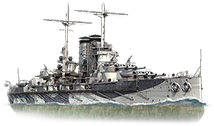
Austria first gained access to the ocean in 1382, yet it would take over one hundred years for armed warships to be flying the Austrian colors starting in very small numbers in 1528. This small group mainly served as coastal defense, and was only under a very local command. It was only in 1797 that Austria truly started to maintain a navy, when Venice became a part of Austria and the Venecian fleet would become the Austrian fleet. This however only lasted for a mere 50 years before the Guerre d'indipendenza italiane, the Italian war for independence, broke out, in which the majority of the crews of Italian origin would turn against the Austrian rule. Having lost almost their entire Naval power, it became clear that Austrian interests on the ocean could only be secured by a proper Austrian Navy. Emperor Franz Joseph drew the consequences and began laying the foundation of a full Austrian Navy. With the inclusion of Hungary in 1867 the navy became the Austro-Hungarian Navy[2]. Despite the everlasting budget issues, the Austro-Hungarian Navy would become one of the larger navies and would follow the latest naval trends, or even set one themselves like with the construction of the first torpedo.
During the first world war the Austro-Hungarian Navy was blocked the access to the Mediterranean Sea by Italian, French and British forces, and would be delegated to a Fleet-In-Being. However the smaller forces would continuously be active in the Mediterranean, in particular submarines[3] which would over the course of the war sink 196,000 GRT with a further 41,000 GRT being possibly sunk. On top of that numerous warships would be crippled and sunk by smaller forces. The only vessel that would see action outside the Mediterranean would be the cruiser[4] Kaiserin Elisabeth, which would otherwise become known as the first target of a ship-launched aircraft.
The end of the Great War in 1918 marked the end of the Austro-Hungarian empire, and as such the end of the Austro-Hungarian Navy. The remaining vessels would become parts of other navies, or in the case of the battleship[5] Viribus Unitis get sunk by Italian divers before they could be redistributed. Austria became a nation in central Europe with no access to the ocean, rendering the need for a large navy impractical.
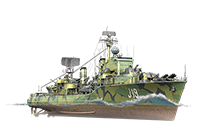
Swedish Royal Navy (Svenska marinen) The Swedish Royal Navy[6] has officially existed since the 7th of June, 1522. Formed in the middle of the Swedish War of Liberation (1521-1523), where Sweden fought for her independence from the Kalmar Union, the Swedish Navy took part in numerous wars in the ensuring centuries. However, Sweden's armed neutrality has lasted from the end of the Swedish-Norwegian war (1814) to the present day, though Swedish forces have become intervened in other conflicts. Swedish ships use the prefix HMS (Hans/Hennes majestäts skepp, or His/Her Majesties' ship), but in English they are normally given the prefix HswMS, to avoid confusion with the Royal Navy.
Sweden's navy was the main enforcer of her neutral policies during both World Wars. While Sweden has never fielded a 'true' battleship, she has kept seaworthy coastal defense battleships since 1886. Indigenous shipbuilders built these coastal defense battleships, cruisers, and destroyers, which were in service from before the first World War until the decommissioning of the Halland in 1987. Sweden's coastal defense battleships have been cited as a reason Germany did not invade Sweden like her Scandinavian neighbors, but how much impact these ships had compared to the military, industrial, and political concessions to the Reich is debatable.
As the Cold War began, it was thought that large Swedish Navy ships would not survive any sort of nuclear attacks in the enclosed Baltic. Thus, construction of ships larger than frigates was stopped, with many larger ships being sold to South American nations or scrapped outright. Destroyer Småland survives as a museum ship in Gothenburg.
Greece's naval history goes back to ancient times with various Greek city-states having their own navies. Notably, they came together during the Persian Wars at the Battle of Salamis in 480 BC. The Greek states were later conquered by various empires throughout history, and thus no Greek naval forces existed, though seafaring traditions continued. In 1821, the Greek people revolted against the Ottoman Empire and demanded independence.
The modern Hellenic Navy (Ελληνικό Πολεμικό Ναυτικό) was born in 1821 during the Greek War of Independence, using converted merchant ships as the base for the navy. During the war, the young Hellenic Navy saw some surprise victories against the Ottoman Navy. As international support for Greek independence grew, the leading world powers intervened and helped Greece secure their independence by 1827. The Hellenic Navy was small in size, but received some warships from foreign powers to help it build up. The ascension of King Otto and the creation of the Kingdom of Greece in 1832 saw the formal creation of the Royal Hellenic Navy and underwent further expansion, opening the first naval schools. During the Crimean War, Greece was blockaded by the Royal Navy to prevent it from attacking the Ottoman Empire and aiding Russia. In 1855, the first steam-powered warships arrived. In 1866, the Greek island of Crete revolted against Ottoman rule, but the Royal Hellenic Navy was in no position to support it, and thus the revolt failed. This made the Greek government realize the importance maintaining a navy. The Royal Hellenic Navy underwent a modernization and new ironclad warships were built. In 1889, Greece saw its first battleships come into service. The Greco-Turkish War of 1897 saw no naval action, but the Royal Hellenic Navy dominated the Aegean Sea, though Greece was defeated on land. In 1909, the Royal Hellenic Navy's most famous warship, the armored cruiser, RHS Georgios Averof was commissioned, and more modern warships also came into service alongside her.
In 1912 the First Balkan War broke out with Greece leading a coalition against the Ottoman Empire. During the war, Greece's most famous admiral, Pavlos Kountouriotis, commanded the Royal Hellenic Navy from the Georgios Averof. He led the Greek fleet to decisive victories at the Battle of Elli in December 1912 and at the Battle of Lemnos in January 1913. These battles secured Greece's victory in the war. Immediately after the war, the Royal Hellenic Navy sought to expand its fleet and purchased two pre-dreadnought battleships from the United States, and an unfinished protected cruiser from China. Greece also put in orders to foreign shipyards for more modern destroyers, light cruisers, and dreadnought battleships, to counter a similar build-up by the Ottoman Empire. However, the outbreak of World War I in 1914 prevented most of these orders from being delivered, and halted Greece's naval expansion. Greece attempted to remain neutral during World War I, but this led to an internal political conflict, and the French Navy confiscating and disarming the Greek fleet in Athens. Greece eventually entered the war on the Entente side in July 1917 and France returned the Greek ships, but too late to see any real action in the war. The Greek fleet deployed to support the Allied Intervention in Russia and the Greco-Turkish War of 1919, in which Turkey defeated Greece on land.
In the interwar years, Greece undertook a naval modernization with assistance of foreign powers. In August 1940, Italy invaded Greece, dragging them into World War II. Greece fell to the Axis powers by April 1941, and the Royal Hellenic Navy suffered heavy losses, including both of their battleships. The Luftwaffe was responsible for the destruction of most of the Greek fleet. What survived of the Royal Hellenic Navy continued to operate alongside the Royal Navy for the rest of the war, and saw it resupplied with ships transferred from the Royal Navy to help recover its losses. The armored cruiser Georgios Averof had escaped and served as the Greek flagship during the war. She would be used as the Suez Canal guardship. The rest of the fleet took part in convoy escort missions in the Mediterranean Sea and some ships took part in the D-Day landings.
After the war, the Royal Hellenic Navy imported a number of foreign ships, mostly from the United States, to rebuild its fleet. Greece joined NATO in 1952 and it only helped further expand their navy and their operations. In 1967, Greek military leaders ousted a democratic government in a coup d'etat and declared a military dictatorship. Greece's King Constantine II attempted a counter coup, but failed and was forced into exile. The Greek monarchy was later abolished in 1973, and the Hellenic Republic was declared, and the navy becoming the Hellenic Navy. That same year, the Greek destroyer, HS Velos refused to sail home from Italy in protest of the dictatorship, gaining international attention. The Greek junta fell in 1974 and democracy was restored. The Hellenic Navy was deployed that year to Cyprus to reinforce their garrison and the Cyprus Army against the Turkish invasion, though no major naval action occurred between either side.
Today the Hellenic Navy remains a major force in Southern Europe and operates a large modern fleet of frigates, fast attack craft, and submarines. It is very capable of controlling the Aegean Sea, the Adriatic Sea, and portions of the Mediterranean Sea. It participates actively in NATO operations alongside fellow allies.
Norway's naval history goes back to the Viking era, but a formal navy wasn't established until 1814, after Norway's brief independence from Denmark. The same year, Norway entered into a union with Sweden, but retained its own independent military. During this time, it saw massive growth, and by the late 19th century it consisted of a handful of coastal defense ships and torpedo boats. Norway gained full independence from Sweden in 1905 and formally became the Royal Norwegian Navy (Sjøforsvaret). Shortly after independence, Norway's first destroyers entered service and a slow naval modernization began. In 1912, the Royal Norwegian Naval Air Service was founded, beginning Norway's era of naval aviation. Norway managed to remain neutral in World War I, despite U-boat attacks on its merchant ships.
Norway's hopes of remaining neutral in World War II were shattered when Germany invaded on April 8 1940. On the first day of the invasion, Norway's coastal defenses at Oscarsborg Fortress sank the German heavy cruiser Blücher in Drøbak Sound, just outside of Oslo. Norway's most powerful warships, the coastal defense ships HNoMS Norge & HNoMS Eidsvold were sunk at Narvik by a flotilla of German destroyers. Norway's fjords and coast became a battleground between the Royal Navy & Kreigsmarine in 1940. Norway fell on 10 June 1940, and the only Norwegian warships that were able to escape were two destroyers and a submarine, with all other warships being sunk or captured. Germany used occupied-Norway as a major base for operations in the Atlantic & Arctic. The Royal Navy would transfer a number of ships to the Royal Norwegian Navy to make up for their losses. The Free Norwegian Navy continued to operate alongside the Royal Navy and was heavily involved in the Battle of the Atlantic performing convoy escort duties. Other notable actions during the war included the the destroyer HNoMS Stord torpedoing the German battleship Scharnhorst at the Battle of the North Cape on 26 December 1943, and ten Norwegian warships took part in the D-Day landings, in which the destroyer HNoMS Svenner was sunk by German torpedo boats, and its special operations unit, called the Shetland Bus, which carried out raids in Occupied-Norway.
After the war, Norway became a founding member of NATO, and with its new allies, helped rebuild its navy. During the Cold War, the Royal Norwegian Navy trained heavily to counter any possible attack by the Soviet Union.
Today, the Royal Norwegian Navy operates a modest force of destroyers, patrol ships, minesweepers, and submarines. It actively participates in joint exercises and patrols alongside NATO allies, and remains vigilant for any possible threat.
Turkey's naval history goes back to the 14th century as the Ottoman Navy (Osmanlı Donanması), and participated in numerous conflicts. Most notably, its victory at the Battle of Preveza against the Holy League in 1538, and its defeat at the Battle of Lepanto in 1571. As history progressed, the Ottoman Empire declined and gradually lost territory. In 1821, Greece declared its independence, and during the Greek War of Independence, the Ottoman Navy saw massive defeats at the hands of the Great Powers. These losses would continue during the 1853-1856 Crimean War and the Russo-Turkish War of 1877-1878. The Ottoman Empire was financially unable to modernize or expand its fleet to the extent that it needed. In 1886, it did make some technological advances with submarines, having the first submarine to fire a torpedo while submerged. By the turn of the 20th century, the Ottoman Empire had help modernizing its navy with ships ordered or purchased used from the Great Powers, to include battleships.
In 1911, the Italo-Ottoman War broke out with disastrous results for the Ottoman Navy, with the following 1912-1913 Balkan Wars against Greece being even more disastrous. This led for a push of further modernization. The Ottoman Empire ordered two dreadnought battleships from British shipyards, but were seized by the Royal Navy upon the outbreak of World War I in 1914. To compensate and gain their loyalty, Germany transferred the battlecruiser SMS Goeben and light cruiser SMS Breslau to them that year. German Admiral Wilhelm Souchon was appointed commander-in-chief of the Ottoman Navy and commanded the Ottoman fleet from the Goeben, now renamed Yavuz Sultan Selim. The Ottoman Empire joined World War I in November 1914 and took action against Russia in the Black Sea, conducting raids along Russia's Black Sea Coast. Twice during the war, Yavuz Sultan Selim took on five Russian pre-dreadnoughts alone. The Ottoman Navy was not capable of taking on the Entente navies in open water, so getting to the Ottoman coast was easy for them. The Galipoli Campaign of 1915 proved to be a successful defense of the Dardanelles Strait for the Ottomans, and three Entente battleships were sunk by Ottoman mines, still the battleship Barbaros Hayridden was sunk by the submarine HMS E11. The last major action of the Ottoman Navy was the Action of 8 January 1916 when the Yavuz Sultan Selim engaged the Russian dreadnought, Imperatritsa Ekaterina II in the Black Sea. The Ottoman Empire would lose World War I and the Ottoman Empire was dissolved.
Political chaos followed the Ottoman Empire's defeat resulted in the Turkish War of Independence, which saw the abolition of the Ottoman Sulanate, the creation of the Republic of Turkey, and the ousting all Entente troops on their soil. The surviving Ottoman warships became incorporated into the Turkish Naval Forces (Türk Deniz Kuvvetleri), with the battlecruiser Yavuz Sultan Selim, now renamed TCG Yavuz as its flagship. The immediate post-war years saw a decline in the state of the Turkish Naval Forces, and in the 1930's, saw new destroyers custom built for them by Italian shipyards. The outbreak of World War II in 1939 slowed Turkey's build-up, but were still able to receive two destroyers from the United Kingdom in 1942. Turkey managed to remain neutral in World War II and refused to allow warships from either side to pass through the Bosphorus. Turkey did eventually declare war on the Axis powers in Spring 1945, but too late to see any action.
In the post-war years, Turkey imported a number of warships from the United Kingdom & United States. Turkey joined NATO in 1952, which only expanded its market. In 1974, Turkey invaded Cyprus, during which, the Turkish Air-Force accidentally sank the destroyer TCG Kocetepe, after mistaking it for a Greek ship.
Today the Turkish Naval Forces remains a major regional naval power, operating a large fleet of frigates, fast attack craft, submarines, and amphibious warships. It is capable of projecting power in the Mediterranean Sea, Black Sea, and abroad. It continues to operate alongside various NATO allies.
Yugoslavia's naval history started in the closing months of World War I in 1918. As Austria-Hungary started to break apart, the State of Slovenes, Croats, and Serbs, comprising much of The Balkans, declared its independence. To peacefully ensure Austria-Hungary's post-war survival, Kaiser Karl I ordered the handover of all Austro-Hungarian warships, fortresses, and bases to the State of Slovenes, Croats, and Serbs. Austria-Hungary immediately sent notifications of this transfer to the Entente Powers to prevent an accidentally attack on the newly created nation. However, this was in vain, as the night of the transfer, Italian frogmen raided the port of Pula and sank the former SMS Viribus Unitis, now renamed Jugoslavia. World War I ended days later, but the Entente Powers refused to recognize the State of Slovenes, Croats, and Serbs or its agreement with Austria-Hungary to handover its fleet. Thus, all Austro-Hungarian warships were seized by the Entente Powers and redistributed. The Austro-Hungarian Empire soon collapsed, and independence of the State of Slovenes, Croats, and Serbs, though internationally unrecognized, was de facto independent.
On 1 December 1918, the State of Slovenes, Croats, and Serbs united with the Kingdom of Serbia & Kingdom of Montenegro, becoming the Kingdom of Serbs, Croats, and Slovenes. The Kingdom argued with the Entente Powers to receive some of the former Austro-Hungarian warships, but requests for specific units were turned down repeatedly until October 1920, with the transfer of mostly obsolete ships, leaving them to rebuild the navy from scratch. In March 1921, it was officially declared the Royal Yugoslav Navy (Kraljevska mornarica). During the interwar years, the navy was comprised with many former Austro-Hungarian sailors. It had ambitions to expand, but was slow to do so. In 1926, it acquired the former German light cruiser, SMS Niobe, renamed KB Dalmacija. In 1929, the Kingdom of Serbs, Croats, and Slovenes, was officially proclaimed as the Kingdom of Yugoslavia. The 1930's continued to see expansion with ships custom built for them in British & French shipyards, to include destroyers and submarines. The destroyer leader KB Dubrovnik served as the flagship of the Royal Yugoslav Navy during its final years.
On 6 April 1941, the Axis powers invaded Yugoslavia, and the navy was caught off guard. The destroyer KB Beograd was sunk by Italian aircraft, as were some smaller Yugoslav fleet units. The river fleet was able to provide gunfire support to the army against German & Hungarian troops, but most of the river fleet was later scuttled and abandoned. The navy's main base in Kotor was captured by Italy early on in the invasion and the Royal Yugoslav Navy's entire blue-water fleet was also captured. Yugoslavia fell on 18 April 1941, and its government went into exile. Only the ten naval aircraft which escaped was what was left of the navy. To compensate this loss, the Royal Navy transferred the Flower-class corvette, HMS Mallow to Yugoslavia and was recommissioned as KB Nada. Nada would take up convoy escort duties in the Mediterranean Sea and was the only ship of the Royal Yugoslav Navy for the rest of the war.
During the war, Yugoslavia's partisans led by Josip Tito, were successfully able to liberate themselves from Axis occupation, and thus declared a new government. In 1945, the Yugoslav monarchy was overthrown and the Federal People's Republic of Yugoslavia was declared, and the navy became the Yugoslav War Navy (Jugoslavenska ratna mornarica). The Nada was renamed Partizanka, but had to be returned to the Royal Navy in 1949. Still, ships were received as reparations from the defeated Axis powers and some purchased outright from other nations. As the Cold War progressed, Yugoslavia was able to develop its own domestic shipbuilding industry and became self-reliant, though influenced by the Soviet Union for certain projects.
Josip Tito died in office in 1980, and began Yugoslavia's period of instability, before its eventual collapse. Relations between the different states that made up Yugoslavia deteriorated and war broke out in 1991, with Slovenia & Croatia declaring independence. In November 1991, Croatian forces captured Yugoslav coastal artillery off Split, and the Yugoslav fleet was sent to destroy them. The battle favored Croatia which forced the retreat of the Yugoslav fleet and the capture of a patrol ship. In 1992, Yugoslavia's communist government fell and became the Federal Republic of Yugoslavia, but the breakup of the country continued. Bosnia and Herzegovina & Macedonia soon declared independence and took up arms for their freedom as well. By 1995 Croatia, Slovenia, Bosnia and Herzegovina, & Macedonia were all independent nations. In 1998, Kosovo was next to fight for their independence and resulted in NATO intervention and occupation of the region. The Yugoslav Navy remained mostly loyal, with a handful of surviving warships being captured by Croatia.
The Federal Republic of Yugoslavia survived until 2003 when it became the State Union of Serbia and Montenegro, and the navy becoming the Navy of Serbia and Montenegro (Ratna Mornarica Srbije i Crne Gore). In 2006, Montenegro peacefully declared independence and inherited the entire navy, as the Republic of Serbia was now landlocked. Despite this, Serbia maintains a large independent river force known as the Serbian River Flotilla (Rečna flotila) and operates a brown-water fleet of patrol ships, minesweepers, and landing craft. This force carries on the traditions of the Yugoslav Navy.
Today, the Serbian River Flotilla, the Montenegrin Navy ( Mornarica Vojske Crne Gore), the Croatian Navy (Hrvatska ratna mornarica), and the Slovenian Naval Detachment (Slovenska Mornarica) operate independent of each other and each have their own traditions. They are regional forces who patrol the Adriatic Sea and their internal waterways. All but Serbia have since joined NATO and work alongside NATO allies.Destroyers
Notes
European Destroyers: Branch Review - Apr 8, 2020 - News - World of Warships
European Destroyers. How to? - Apr 9, 2020 - World of Warships Official Channel - YouTube
Destroyer Smaland (Maritiman)
- ↑ Polish Navy (Wikipedia) and Ships of the Polish Navy (Wikipedia)
- ↑ Austro-Hungarian Navy (Wikipedia) and Ships of Austria-Hungary (Wikipedia)
- ↑ Austro-Hungarian U-boats (Wikipedia)
- ↑ Cruisers of Austria-Hungary (Wikipedia)
- ↑ Battleships of Austria-Hungary (Wikipedia)
- ↑ Swedish Navy (Wikipedia) and Ships of the Swedish Navy (Navypedia)
